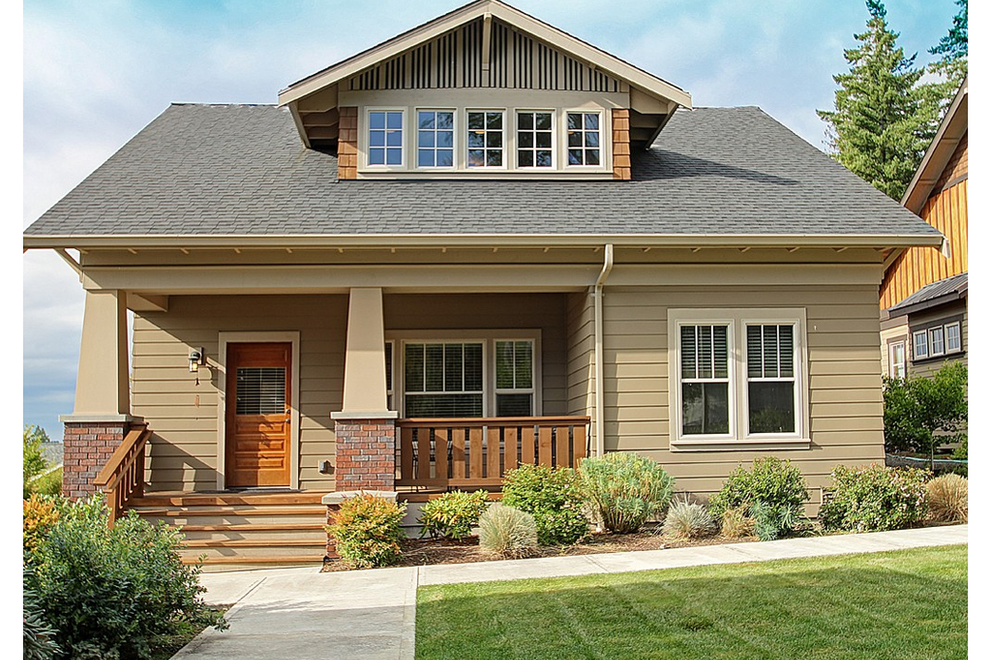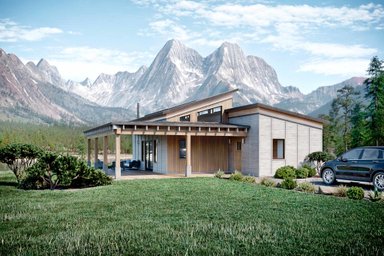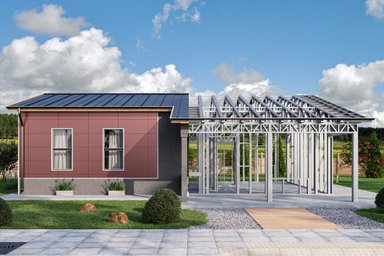Windows will be one of the big ticket items for your new home. It’s not unusual for window packages (a window package is the complete sets of windows for a home) to have values in the tens of thousands of dollars. And, though rare, there are homes where the window package can approach a million dollars. Given the cost of this line item in your overall building budget, it makes sense to ensure you get the windows you want without needing to reorder because of selecting the wrong type and operation, incorrect sizing, building code non-compliance, or simply not knowing what features are available.
Window Types Based On Operation
From double hung to stationary, windows come in several distinct type of operation. Sliding up and down (single or double hung), hinged at the side like a door (casement), hinged at the top (awning), sliding left and right (glider), hinged at the bottom and side (tilt-turn) and simply non-opening (stationary) are the major types of operating. Of course, there are specialty windows, such as oval windows that pivot to open, that are also available.
The thing to do is look at each window identified on the drawings and determine if the type of window shown is the type of window you want. For example, you may not want a double hung window because only half of the window can be open. In this case, you might chose a casement window so you get as much fresh air opening as possible.
Correct sizing
From aesthetics to code compliance, from each manufacturer’s idiosyncrasies to a window’s location, there are a number of factors that will determine the size of a window. And it’s just a waste of time and money to have to reorder a window that doesn’t fit the way it’s supposed to. Early on it’s important to narrow your window selection to one manufacturer and select from that manufacturer’s size charts. Working with a rep for that window company, you’ll then be able to select windows that function as you want and that will fit into the framing openings your builder will create. And don’t wait to do this as it only delay construction if you can’t identify the rough opening dimensions needed early in the construction process.
Building code compliance
From strength to size, from location to construction, windows must comply with a host of building code mandated items. For example, a window might need strengthening if it’s near an interior door and a window in hurricane prone areas must be impact resistant so that flying debris doesn’t smash the window to pieces. And then there are the basic egress requirements that dictate a minimum size window in certain locations. So the best thing to do is review each window carefully with a qualified professional such as your architect or builder to make sure that what you are ordering and about to install complies with all governing codes and regulations. Again, having to replace an installed window because the building inspector flagged it as not complying with code can be really costly.
Window features
Do you know the difference between snap-in grids, simulated divided lites (SDL’s) and authentic divided lites (ADL’s)? Do you have a preference for vinyl, vinyl clad wood, wood, aluminum, aluminum clad wood or other material? What about screen materials, hardware finishes, muntin dimensions, etc.? The range of options for windows is staggering. Not only does each manufacturer produce windows that are designed and engineered differently from the competition, each manufacturer will also offer several different lines (think Pella’s Pro Line, Designer Series and Architect Series). With so many differences and options available, it makes sense to work closely with someone who isn’t trying to sell windows but can truly explain these differences and why you should choose one feature or function over another.
Window Types Based On Operation
From double hung to stationary, windows come in several distinct type of operation. Sliding up and down (single or double hung), hinged at the side like a door (casement), hinged at the top (awning), sliding left and right (glider), hinged at the bottom and side (tilt-turn) and simply non-opening (stationary) are the major types of operating. Of course, there are specialty windows, such as oval windows that pivot to open, that are also available.
The thing to do is look at each window identified on the drawings and determine if the type of window shown is the type of window you want. For example, you may not want a double hung window because only half of the window can be open. In this case, you might chose a casement window so you get as much fresh air opening as possible.
Correct sizing
From aesthetics to code compliance, from each manufacturer’s idiosyncrasies to a window’s location, there are a number of factors that will determine the size of a window. And it’s just a waste of time and money to have to reorder a window that doesn’t fit the way it’s supposed to. Early on it’s important to narrow your window selection to one manufacturer and select from that manufacturer’s size charts. Working with a rep for that window company, you’ll then be able to select windows that function as you want and that will fit into the framing openings your builder will create. And don’t wait to do this as it only delay construction if you can’t identify the rough opening dimensions needed early in the construction process.
Building code compliance
From strength to size, from location to construction, windows must comply with a host of building code mandated items. For example, a window might need strengthening if it’s near an interior door and a window in hurricane prone areas must be impact resistant so that flying debris doesn’t smash the window to pieces. And then there are the basic egress requirements that dictate a minimum size window in certain locations. So the best thing to do is review each window carefully with a qualified professional such as your architect or builder to make sure that what you are ordering and about to install complies with all governing codes and regulations. Again, having to replace an installed window because the building inspector flagged it as not complying with code can be really costly.
Window features
Do you know the difference between snap-in grids, simulated divided lites (SDL’s) and authentic divided lites (ADL’s)? Do you have a preference for vinyl, vinyl clad wood, wood, aluminum, aluminum clad wood or other material? What about screen materials, hardware finishes, muntin dimensions, etc.? The range of options for windows is staggering. Not only does each manufacturer produce windows that are designed and engineered differently from the competition, each manufacturer will also offer several different lines (think Pella’s Pro Line, Designer Series and Architect Series). With so many differences and options available, it makes sense to work closely with someone who isn’t trying to sell windows but can truly explain these differences and why you should choose one feature or function over another.






